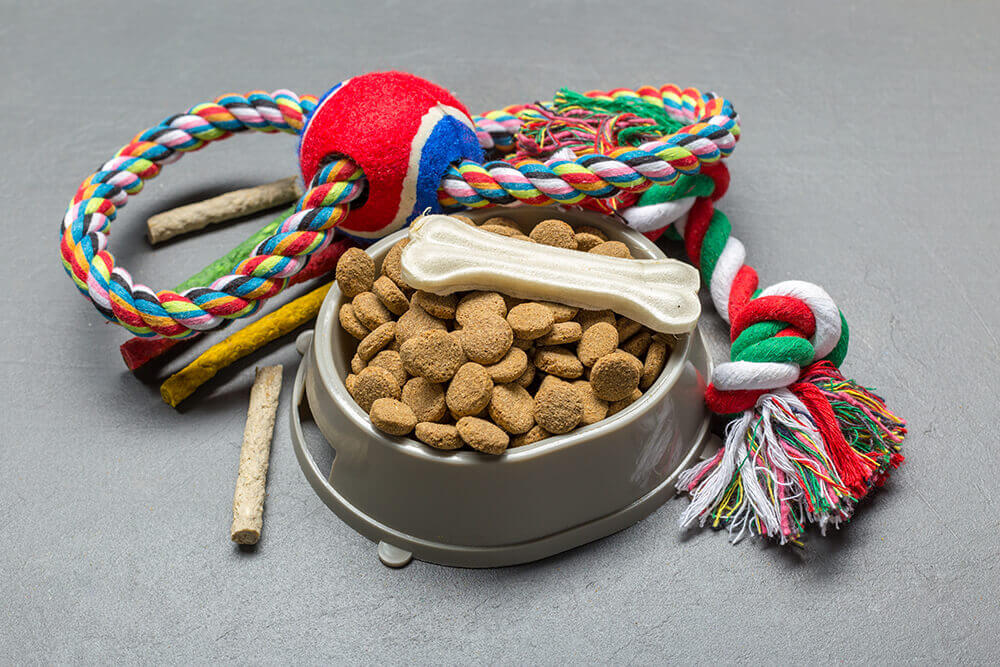Training your dog can be a rewarding experience, fostering a deeper connection between you and your furry companion while ensuring they are well-behaved and responsive to your commands. Central to successful dog training is the use of treats as favorable reinforcement. Choosing suitable treats is critical to keeping your dog motivated and eager to learn.
In this article, we will explore the best treats for dog training and provide you with valuable insights to make your training sessions as effective and enjoyable as possible.
The Role of Treats in Dog Training
Treats serve as powerful motivators when training your dog. They provide immediate positive reinforcement, reinforcing desired behaviors and helping your dog understand what you expect from them. By using treats, you can create a strong association between the desired action and the reward, making it more likely that your dog will repeat the behavior.
To be effective in training, treats should meet specific criteria. They should be highly palatable, small in size, easy to break into even smaller pieces, and, most importantly, something your dog loves. Additionally, consider the nutritional value of the treats, as they should not make up a substantial portion of your dog's daily caloric intake.
Best Treat Options for Dog Training
Here are some of the best treat options for dog training, along with their advantages and potential considerations:
1. Commercial Training Treats
Commercial training treats are specifically designed for dog training. They are small, low in calories, and come in a variety of flavors to suit different preferences. These treats are convenient and easy to carry during training sessions, and your dog will likely find them irresistible. They are typically made with high-quality ingredients to ensure your dog's health is not compromised during training.
Advantages:
- Designed with mind training.
- Convenient and portable.
- Highly palatable and motivating for dogs.
- Available in different flavors to satisfy different tastes.
Considerations:
- They can be relatively expensive compared to some homemade options.
2. Homemade Treats
Making your treats at home allows you to control the ingredients and ensure your dog is getting a healthy reward. Popular homemade treats include small pieces of cooked chicken, cheese, or even plain, unsalted, and unbuttered popcorn.
Advantages:
- You have control over the ingredients.
- More cost-effective option.
- You can customize treats to your dog's preferences.
- Reduces the risk of artificial additives and preservatives.
Considerations:
- Homemade treats may spoil faster than commercial options.
- Ensure that the ingredients used are safe for dogs, and avoid using harmful seasonings or additives.
3. Fruit and Vegetables
Some fruits and vegetables can serve as healthy and low-calorie training treats for your dog. Pieces of apple, carrot, blueberry, or even green beans can be appealing and offer a different flavor profile from traditional meat-based treats. Ensure the chosen fruits and vegetables are safe for dogs and cut them into small, manageable pieces.
Advantages:
- Low in calories.
- A healthy option for dogs.
- Provides variety in flavors and textures.
- Great for dogs on a diet or with dietary restrictions.
Considerations:
- Some dogs may not be as enthusiastic about fruits and vegetables as they are about meat-based treats.
- Be aware of which fruits and vegetables are safe for dogs, as some can be toxic.
4. Freeze-dried or Dehydrated Treats
Freeze-dried or dehydrated treats maintain the flavor and nutritional value of the original ingredient while offering a lightweight and easily transportable option for training. You can find a wide range of freeze-dried treats, such as beef liver, chicken, or fish.
Advantages:
- Retains the flavor and nutritional content of the original ingredient.
- Lightweight and easy to carry.
- Available in various protein sources.
- Minimal processing.
Considerations:
- These treats can be a bit more expensive than traditional commercial options.
- Some dogs may find the texture of freeze-dried treats unusual.
5. Soft Training Treats
Soft training treats are small, chewy, and easy for dogs to consume quickly during training. They are often made with a variety of flavors, making them appealing to most dogs. Some soft training treats are designed to be breakable, allowing you to adjust the size according to your training needs.
Advantages:
- Soft and chewy, making them easy to eat quickly.
- Designed for training, so they are highly motivating.
- Available in multiple flavors.
- Many options are low in calories.
Considerations:
- Check the ingredient list for potential allergens or fillers.
- Some soft treats may be too large for small dogs or puppies.
Considerations When Choosing Dog Treats
When selecting treats for dog training, there are several factors to keep in mind:
- Your Dog's Preferences: Pay attention to what your dog enjoys the most. Some dogs are more motivated by meat-based treats, while others may prefer fruits or vegetables. The key is to use treats that genuinely excite your dog.
- Caloric Content: Be mindful of the caloric content of the treats, especially if you're using a lot of them during training. Adjust your dog's regular meals to compensate for the additional calories from treats to maintain a healthy weight.
- Size and Texture: Choose treats that are easy to handle and quick for your dog to consume. Small, soft, or breakable treats are generally ideal for training.
- Allergies and Dietary Restrictions: If your dog has allergies or dietary restrictions, ensure the chosen treats are safe and free from allergens or ingredients that could trigger a negative reaction.
- Consistency: It's essential to be consistent with the treats you use during training. Using the same type of treat consistently helps your dog understand the reward system.
- Variety: While consistency is crucial, occasionally introducing a new and exciting treat can keep training sessions engaging and prevent your dog from becoming bored with the same treat.
- Nutritional Value: While training treats should be enticing, they should not compromise your dog's health. Look for treats made from high-quality ingredients.
Conclusion
The best treats for dog training are those that motivate and reward your furry friend effectively. Whether you opt for commercial training treats, homemade options, fruits and vegetables, or freeze-dried treats, the key is to choose treats that your dog loves and that align with their dietary needs.
Remember that while treats are an excellent training tool, they should be used in conjunction with praise and positive reinforcement. Consistent and patient training, along with the right treats, will help your dog become a well-behaved and happy member of your family. So, get ready with your treat pouch and enjoy the journey of training your furry friend!
Browse our vast collection of dog treats and give your furry friend the delicious rewards they deserve. Shop with confidence with Pets Lounge, knowing that you're providing your pet with treats that are not only flavorful but also promote their well-being.





